Your Ideal Polysnth: How (not) to choose the polyphonic synth of your dreams
You’re standing in a showroom, hunting around for your very first polysynth. You’d imagined this would be a joyful experience. Now you’re frozen in the headlights of purchase anxiety surrounded by a horde of magical music machines. And you realise that you can’t choose just one. Gnashing your teeth, you curse the invention of the polyphonic synthesizer!
Buying your first polysynth
When talking about polysynths – polyphonic synthesizers – we’re talking about the big ones. The sort of synthesizers that dominate your desk, that could be a piece of furniture and are probably going to be a one-time investment using (if we’re honest) funds you don’t have to fulfil a need that’s really not there. But your level of GAS (gear acquisition syndrome) has got to the point that something has to give. My Facebook feed seems to be full of people with racks and racks of huge synths that they pick up on a whim. That’s fine, but this post is not about my next synth, this is about my first polysynth. And that’s not a whimsical thing; it’s torture.
- A word from the editor: this post contains affiliate links. Buying via an affiliate puts a small commission our way and helps to keep the lights on. But you pay the same price as you would have anyway. Sorry for the interruption!
The big workstations
Time and again in studios and on stage we find big workstation synths. In today’s money, you’d be looking at the Roland Fantom, Yamaha MOD-X and Korg Kronos. They have a huge range of production-ready sounds that cross genres, fit into mixes and are complex and selectable and fabulous and leave me absolutely stone cold. People undoubtedly make great music with them but my heart beats for something more analogue, something that’s all about the front panel, something that pulls you into sound design and hands-on action. I want a polysynth I can connect with, a muse rather than a solution to all my musical needs.
Sequential Circuits Prophet-5/Prophet-6
As a youth my dream synthesizer was a Sequential Circuits Prophet-5 and it’s amazing that 40 years later Sequential has a bunch of descendants offering exactly the same level of excitement that the Prophet-5 gave me all those years ago. The Prophet-6 is the most direct evolution with 6-voices of polyphonic analogue synthesis and a completely palpable vibe. People say great things about the Prophet Rev2 with its 16 voices, massive sounds, extensive modulation matrix and polyphonic step sequencing. And then there’s the OB-6, a classic collaboration between Dave Smith and Tom Oberheim that offers vintage tones over 6 voices. Each one looks like an instrument, sounds fantastic and must surely fulfil my criteria. Maybe, but are they edgy enough? Are they somehow too backwards-looking and not really pushing into those wider modern tones?
Roland Jupiter-X
What about the other big brands? Yamaha doesn’t seem to be able to see past the big workstation vibe so I’ll let them go. Roland is very much a forward-looking brand and by travelling into the future they seem certain that the path to perfect synthesis comes in software and advanced computer models. Their ZEN-Core technology is breath-taking and they are able to authentically recreate all their old synths while pushing into new ways of generating sound. The Jupiter-X is a huge synth that has that Jupiter-8 vibe that I find completely thrilling. But somehow the complexity of the sound engine gets lost in the translation to knobs and sliders which seem to only scratch the surface of the so many synthesizers within. The look alone is maybe enough to woo me.
Korg Prologue
Korg, on the other hand, doesn’t seem to be able to put a foot wrong. They consistently release pleasing machines immersing themselves in analogue while getting playful with the digital possibilities. At a synth event last year with many polysynths to play with I kept finding myself back on the Prologue. The dark look and the layout really worked for me. Whatever sound I dialled up was easily edited and quickly modified to become my own. There’s a digital edge of custom oscillators that can take you on lovely little adventures into tone. The Prologue feels natural, intuitive and has been poking at my wallet ever since. But it also feels….. I don’t know, safe?
The Novation Summit is another safe choice that you know would do a perfectly awesome job of being a decent, straight forward polysynth. But do I really want to make the sensible choice?
Going a little bit leftfield could take me into wavetable territory where I’d find the very reasonably priced Hydrasynth and Argon8. Both have brought out the possibilities of wavetable synths in wonderfully festooned front panels, masses of modulation and endless tonal possibilities. Or maybe Korg’s Wavestate would inject some excitement into my journey. I feel I might get lost in the search for the perfect wave and forget to play with what’s there.
Moog One and the Matriarch
My anxiety is intent on talking myself out of every possibility and so perhaps I should take my traumatised soul into the warm embrace of Moog. I’ve played with the Moog One, it’s a stunning synthesizer. It’s the sort of synthesizer you could spend the rest of your life exploring. You’d need to create some space for it. Ideally, it should sit dead centre in a large room on a vintage rug surrounded by potted plants and quadraphonic speakers. Your life will now be viewed exclusively through overexposed and deteriorating Super-8 film – and it will be awesome. For the price, I could buy a few of the other candidates and that makes it difficult to justify. The Matriarch, on the other hand, fits the budget better. It’s a future classic with a paint job that splits opinion and a sound that can make you cry real tears in 4-voices. It doesn’t have polyphonic articulation but it has 4 sweet oscillators and more charm than most synths can muster. It’s a real contender because it’s Moog, it’s modular, it’s groovy and to me it looks like a million bucks from the 1970s when a million bucks was a lot of money.
You are currently viewing a placeholder content from YouTube. To access the actual content, click the button below. Please note that doing so will share data with third-party providers.
Don’t for a moment think this is settled quite yet.
Going back to my childhood I adored the Vangelis China album which led to a devotion to the Blade Runner soundtrack and ultimately the Yamaha CS-80. I have, for the past year, been building a Deckard’s Dream synthesizer which, in those moments when I think I might actually complete it, I must remind myself is a kick-ass polysynth based to some degree on the CS-80. So maybe I already have my dream polysynth. Maybe it’s purely my lack of time to finish such a detailed and involved DIY build that keeps me from having the synthesizer I’ve always wanted. Nah, it’s never going to work and it doesn’t have a keyboard so I can’t truly see it as the instrument my heart desires.
Udo Super-6
Which neatly brings me back around to the beginning of this conundrum. How do you choose your first polysynth? Maybe I’m taking it too seriously and I need to realise that there’s no perfect choice and it’s how you use your gear that’s important. But that line of thinking makes me feel I don’t really need one anyway. The UDO Super-6 has just become available and it sat there taunting me with its fingerable front panel, binaural spatialisation and digital fed analogue signal path. It has all the analogue I love and all the digital I could want to explore. A preorder button has never been hovered over so intently. But where’re the wooden cheeks, where’s the character in the design of the instrument? It looks somehow uncertain although the black gives it more gravitas. Dammit, I’m going to miss out on the first shipment.
So, how are you going to choose your first polysynth?
21 responses to “Your Ideal Polysnth: How (not) to choose the polyphonic synth of your dreams”
 4,5 / 5,0 |
4,5 / 5,0 | 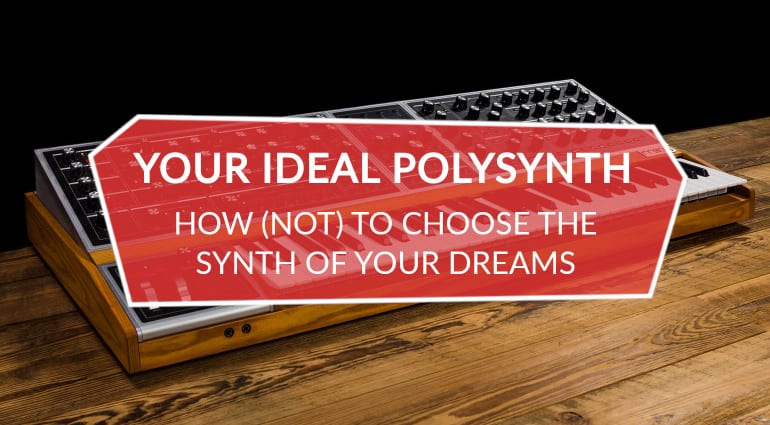

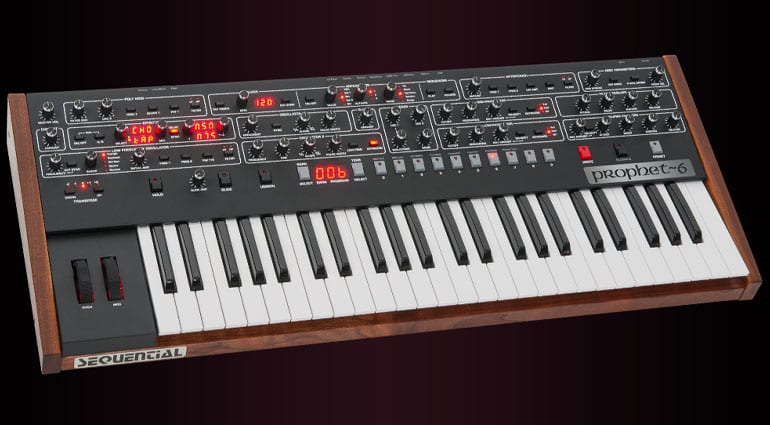
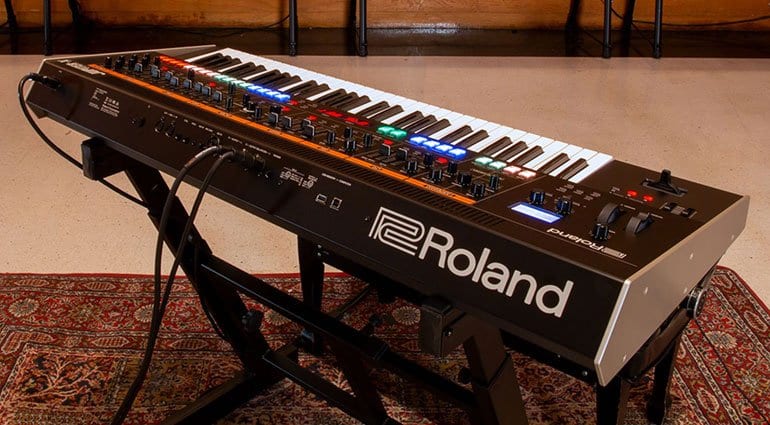

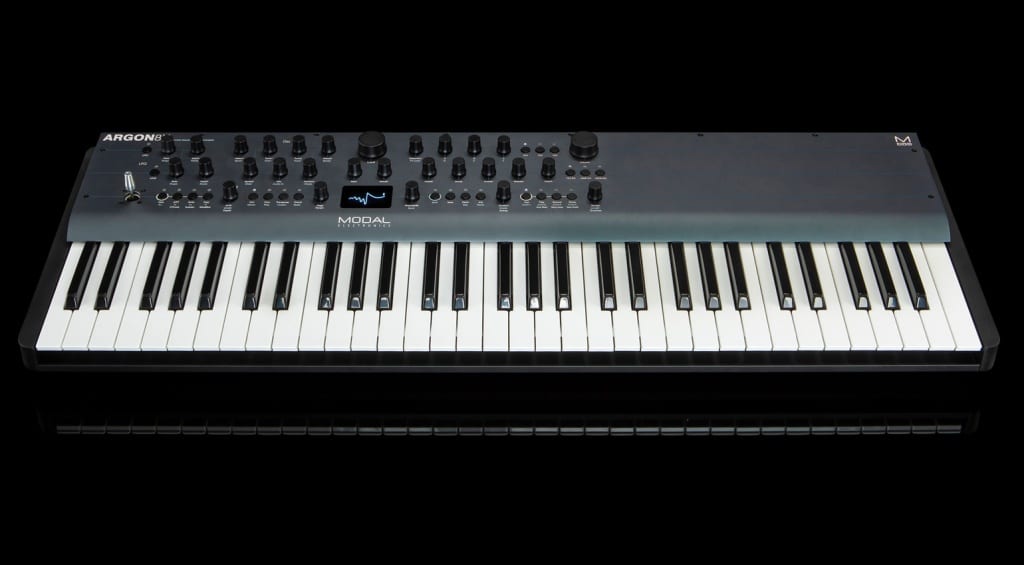

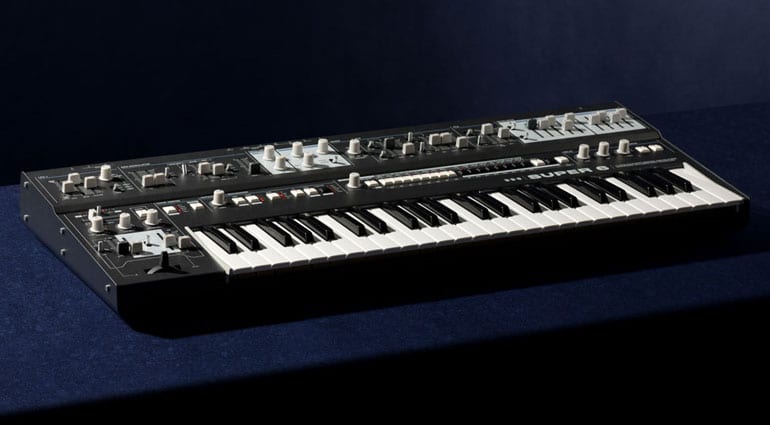


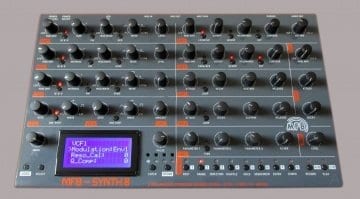
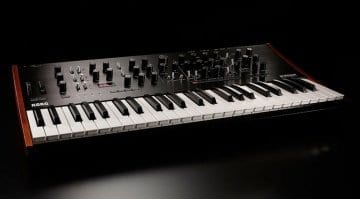
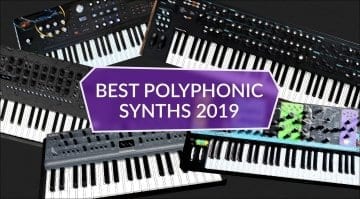

What about the Behringer Deepmind 12 and 6? Probably the best bang for your buck nowadays.
I’ve played the Deepmind and it didn’t feel me with joy in terms of physicality and feel – it’s not an aspirational synth for me.
I personally prefer the “logue” type of controls (Minilogue, Prologue), but I think the “Deepminds” should be included in the list as a beginner’s legit choice. Just my personal opinion, of course.
Oh yes indeed and I wouldn’t argue with that but this was a personal article about my thoughts which was why i didn’t base it on what i thought might be good for beginners 😀
Totally respectable too! Peace and take care!
That was easy. I bought the one that gave me chills to hear and was a breeze to use. I also spent countless hours on YT watching videos of all the synths in action.
You can make vintage music with a new synth or you can make new music with a vintage synth – sure, some things are easier than others depending on your choice, but the only thing stopping you is you.
If it’s a first polysynth I would go for a Dave Smith, but what about DeepMind 12 or 6 ? Real contenders for someone new to polysynths. Would not go for the moog matriarch. It is the kind of synth to get after your first poly to do more experimentation but still lacks a couple of modules like vca’s and lfo’s sadly enough.
And if you want it all, just get a John Bowen Solaris. Wavetables, lots of filters, 4 vco’s and it will keep you busy just like the polymoog for years to come
Buy second hand. Get a Juno or similar, they are reasonable priced. If I was starting out today, and had the money, I would get one from Black Corporation. They sound fantastic (much better than the new Prophets), have great hands-on controls, and don’t fill up the entire studio with a keyboard I’m not very good at playing anyways.
Good comments…. however, for me, buying second-hand doesn’t quite give that same shiny object satisfaction as getting something sparkly and new. Black Corporation is awesome – i’m building a Deckard’s Dream – but desktop units don’t fit my ideal of a synthesizer as an independent instrument. So while you are completely right, it doesn’t fit with what I’m trying to achieve in this case 😀
Skip your first synth and buy the second or the third to save you some time.
Ha! Good idea.
Can I add the Studiologic Sledge to the list? It has a few quirks but in terms of sonic versatility as a VA with ability to load your own samples into the osciallators too for the PPG Wave kinda thing, loads of knobs for that real interaction and a great keybed, I love mine – I was going to get rid of it as I didn’t think I was using it enough as I have so many VSTs, but having reappraised it, I love it, it’s so easy to get great sounds and very inspiring and great value for money.
There’s a lot of warmth for the Sledge amongst synth people – it’s never appealed to me – maybe it’s too brash – but then i’m never happy.
I use a Sledge 2 Black as my first call synth, and in my opinion it’s as brash- or not- as you make it. Having all the sound controls at my fingertips without menu diving makes it almost as easy to tweak as an MS20, and the keys are a joy to play.
I’m going to second the Studiologic Sledge 2.0. I own a second-hand black edition, and it’s an immensely enjoyable hands-on instrument. It does VA sounds very well and also has the weirdness and digital shimmer of PPG-style wavetables. The sample memory is a convenient afterthought (mine is loaded with Fairlight vocal samples and Emulator II strings right now)
If it’s your first foray into the wonderful world of Poly synths, I’d definitely recommend the Behringer Deepmind 12; it has sufficient polyphony not to leave you always wishing for more ( take note Roland Boutique range ! ), is massively tweakable, is a great choice for learning the core elements of analogue synthesis – much like the Juno 106 was ‘when I were a lad’, has tonnes of storage space for saving your creations, and won’t break the bank either as they come up often at around £500. Once you’ve got your head around the basic architecture of analogue synthesis, there’s a lot more depth to explore later on with an excellent modulation ‘matrix’. I own a lot of poly synths, but the Deepmind 12 is right at the top of my favourites for ease of creating an incredibly varied pallet of patches. For even less money, the Roland GAIA is another great learning tool, too – digital but packed with polyphony and dead simple to programme.
Polybrute, man! 🙂
Well I’ve had a few of the above, i.e prophet 6, rev 2… sold em don’t miss em. But I’ve had nearly 100 synths okd and new, inc 80s classics so a synth has to feel just right to be a keeper for me. Currently the three I’ve stuck with are Korg Prologue 16, Prophet 10 Rev 4 (much nicer than the clinical prophet 6), and my old, gorgeous JD800
Happy with my Sequential Prophet X
Interesting read.
In the meantime you can look at the Polybrute and to the Juno-X , for the latter you can order some wooden panels from Etsy.
You are currently viewing a placeholder content from Facebook. To access the actual content, click the button below. Please note that doing so will share data with third-party providers.
More InformationYou are currently viewing a placeholder content from Instagram. To access the actual content, click the button below. Please note that doing so will share data with third-party providers.
More InformationYou are currently viewing a placeholder content from X. To access the actual content, click the button below. Please note that doing so will share data with third-party providers.
More Information